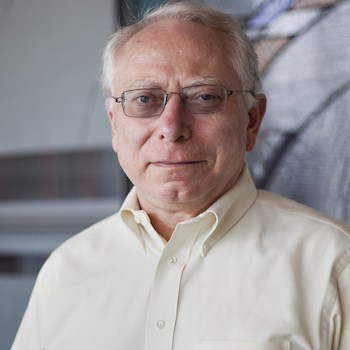Location
2428 Space Research Building
2455 Hayward Street Ann Arbor, MI 48109-2143
Phone
Primary Website
Biography
Additional Title(s)
- Director, Center for Space Environment Modeling
A native of Hungary, Tamas Gombosi was educated in theoretical physics at the Lóránd Eötvös University in Budapest. He did his postdoctoral research at the Space Research Institute (IKI) in Moscow, Russia, under the direction of space pioneer Konstantin Gringauz. Early in his career Tamas Gombosi was a member of the scientific staff of the Central Research Institute for Physics (KFKI) of the Hungarian Academy of Sciences. In 1985 he joined the faculty of the University of Michigan.
His scientific contributions span from planetary exploration to theoretical space plasma physics, to kinetic theory and generalized transport equations, to global simulations of space plasmas. His recent interests focus on the development of high performance numerical codes and software frameworks for simulating space plasmas.
Gombosi participated in a number of exciting space missions, including the Venera 9 and 10 Venus orbiters, the VEGA mission to comet Halley, the Dynamics Explorer mission to explore the upper atmosphere and ionosphere, and the Pioneer Venus mission. Recent space missions include the Cassini/Huygens mission to Saturn and its moon Titan, the Rosetta mission to comet Churyumov-Gerasimenko, the STEREO mission to explore solar storms, and the Magnetospheric Multiscale mission.
Tamas is married to Eszter Gombosi, a Senior Programmer Analyst in the Department of Biostatistics, School of Public Health, The University of Michigan. They have two grown children: Judit and Zoltan. Both of them are alumni of the University of Michigan.
Education
- PhD Physics ’74
- MS Physics ’70
Research Interests
Tamas Gombosi is a leading space plasma physicist with particular interest in numerical modeling of the space environment.
His present research interests include:
development of a first-principles based, predictive global space weather simulation framework (SWMF) extending from the solar photosphere to the terrestrial atmosphere; physics of the space environments of planets (including Earth) and comets; theoretical investigations of plasma transport in various regions of the heliosphere; fundamental kinetic theory of gases and plasmas; and, high-performance multiscale 3D MHD simulations of solar system plasmas on solution adaptive unstructured grids.
He continues to participate in the exploration of our solar system. He is Interdisciplinary Scientist of the international Cassini/Huygens mission to Saturn and its moon, Titan. He is a Co-Investigator of the ROSINA ion-neutral mass spectrometer to be flown on the international ROSETTA mission to comet Churyumov-Gerasimenko, and a Co-Investigator of the IMPACT plasma instrument on NASA’s STEREO mission to explore solar storms. He is a member of the theory and modeling team of the Magnetospheric Multiscale mission that will study the microphysics of three fundamental plasma processes: magnetic reconnection, energetic particle acceleration, and turbulence. He is Principal Investigator of several large interdisciplinary research efforts, including a joint NASA/NSF/AFOSR project to provide the space science community with a flexible modeling tool for space weather applications.
Awards
- NASA Group Achievement Award (Cassini Interdisciplinary Scientists), 2009.
- NASA Public Service Group Achievement Award (Rosetta), 2007.
- Rollin M. Gerstacker Endowed Professor of Engineering, The University of Michigan, 2007.
- Steven S. Attwood Award (the highest faculty achievement award in the College of Engineering), College of Engineering, The University of Michigan, 2002.
- Team Excellence Award, College of Engineering, The University of Michigan, 1999.
- NASA Group Achievement Award (Cassini Orbiter), 1998.
- Elected Full Member, International Academy of Astronautics (Corresponding Member 1993, Full Member 1997)
- Fellow of the American Geophysical Union (elected in 1996)
- Research Excellence Award, College of Engineering, The University of Michigan, 1992.
- Lajos Jánossy Award (the highest science award of the research center), Central Research Institute for Physics, Hungary, 1987.
- László Detre Award (young scientist award), Lóraánd Eötvös Physical Society, Hungary, 1982.
- KFKI Award, Central Research Institute for Physics, Hungary, 1978.
- KFKI Award, Central Research Institute for Physics, Hungary, 1976.
- Albert Fono Award (young scientist award), Hungarian Astronautical Society, 1976.
